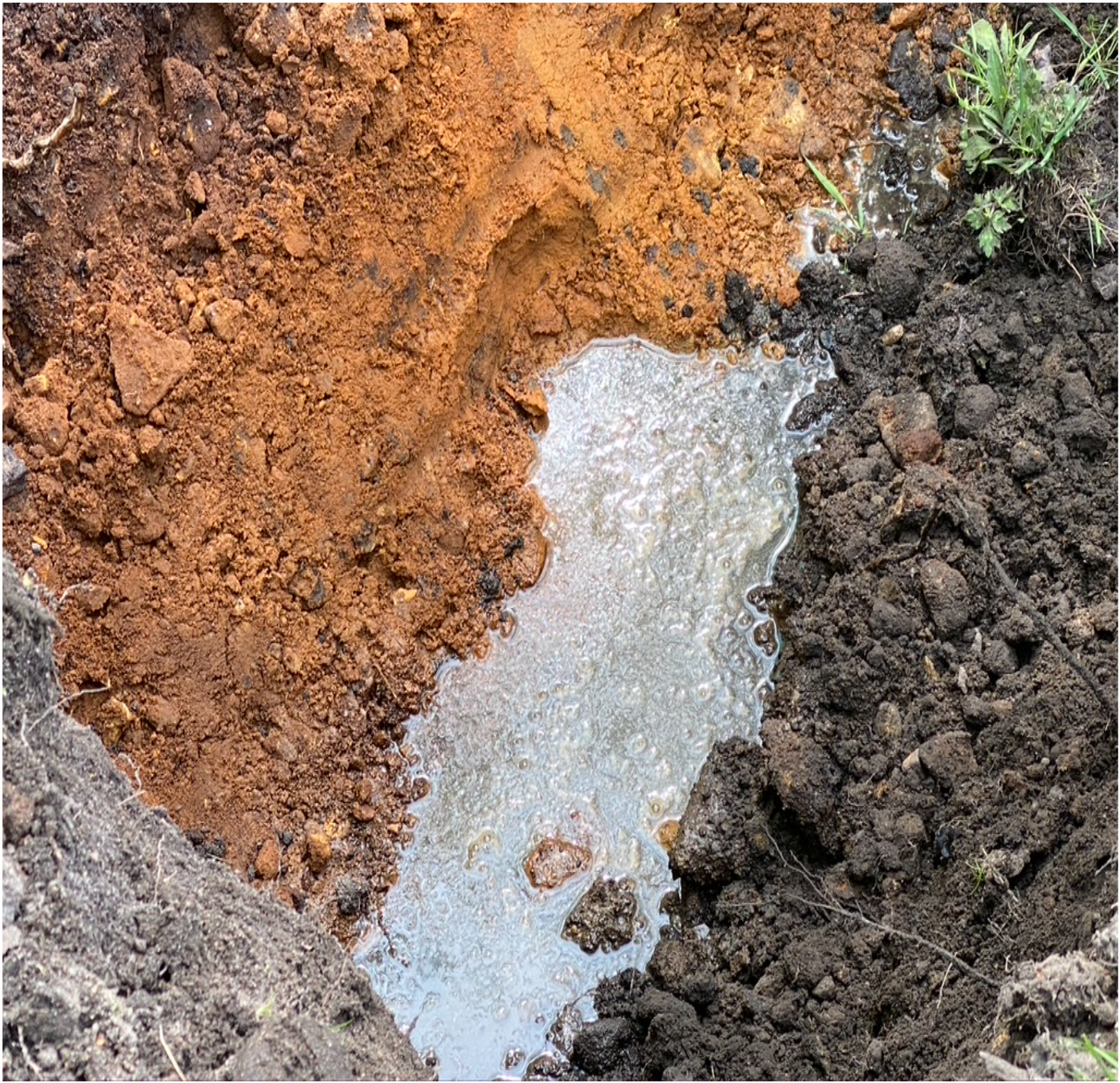Case Study | Septic tank or cesspit upgrades
Further advantages from the experienced blocked drains person

A case in point
To follow up on your request, we returned to the above address on Monday, the 18th of August 2019, carrying out test holes to determine the ground make-up and to find out if the private sewage system is suitable and if it meets binding rules.
The test hole results revealed that the ground is made up of thick clay, concluding that the ground is unsuitable for septic tank drainage-fields (land drains).
Please find below some information regarding septic tank systems, which we hope you will find helpful:-
- A septic tank comes in two parts: a chamber which separates the unwelcome fats and the solids, and the separated but untreated water ideally discharges slowly into light aerated soil, where treatment (which we call secondary treatment) occurs.
- Discharges into clay ground are not permitted as the ground is non-porous and deprived of oxygen.
- Heavy clay soils are not permeable; a deep soak away can stay soaked for long periods, particularly during high rainfall. Any sewerage or separated sewerage (not treated) discharged into clay ground will turn black like oil.
- During rainfall, the contamination washes toward lower ground or ditches into watercourses, leading to streams and rivers
For more information on septic tanks, visit our webpage here: https://www.asllimited.co.uk/septic-tanks
To book one of our engineers to check yours is in good condition, you can call us on 0800 181 684, and we'll carry out a survey and suggest a maintenance plan going forward.

